- Submitted on
- 2 comments
The poem now commonly known as “The Night Before Christmas” was originally published anonymously in 1823 by the Troy Sentinel (New York). It has been integral in the formation of the modern North American vision of Christmas; in particular, the appearance and role of St. Nick or Santa Claus. A unique, hand-written version of this poem is included in the Odell Family Papers from the New Brunswick Museum Archives, copies of which are part of The Loyalist Collection.
“A Visit from St. Nicholas” is usually attributed to classical scholar and writer Clement Clark Moore of New York City, but there has been much debate as to whether Henry Livingston Junior was indeed the true author. The initial publication was apparently done without the author’s knowledge, and a series of events occurred which made Moore’s family and the public believe that he had authored the poem. Moore did officially claim authorship of the poem in 1837 and published it (at the urging of his children) in an 1844 collection entitled Poems.
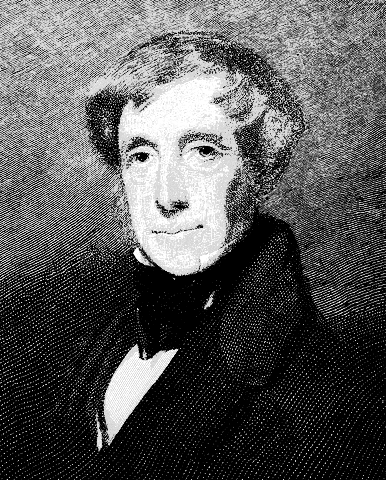
(Image courtesy of Wikimedia Commons, Engraved by J. W. Evans, Making of America, Public domain)
Clement Clark Moore was the son of Benjamin Moore, second Episcopal Bishop of New York, and the godson of Jonathan Odell. Odell was a loyalist clergyman, surgeon, poet, and government official who was originally from New York, which is where he developed a relationship with the Moore family. These ties remained after he migrated to Fredericton, New Brunswick as a refugee of the American Revolution. Odell exchanged letters and poems with various correspondents, including members of the Moore family.
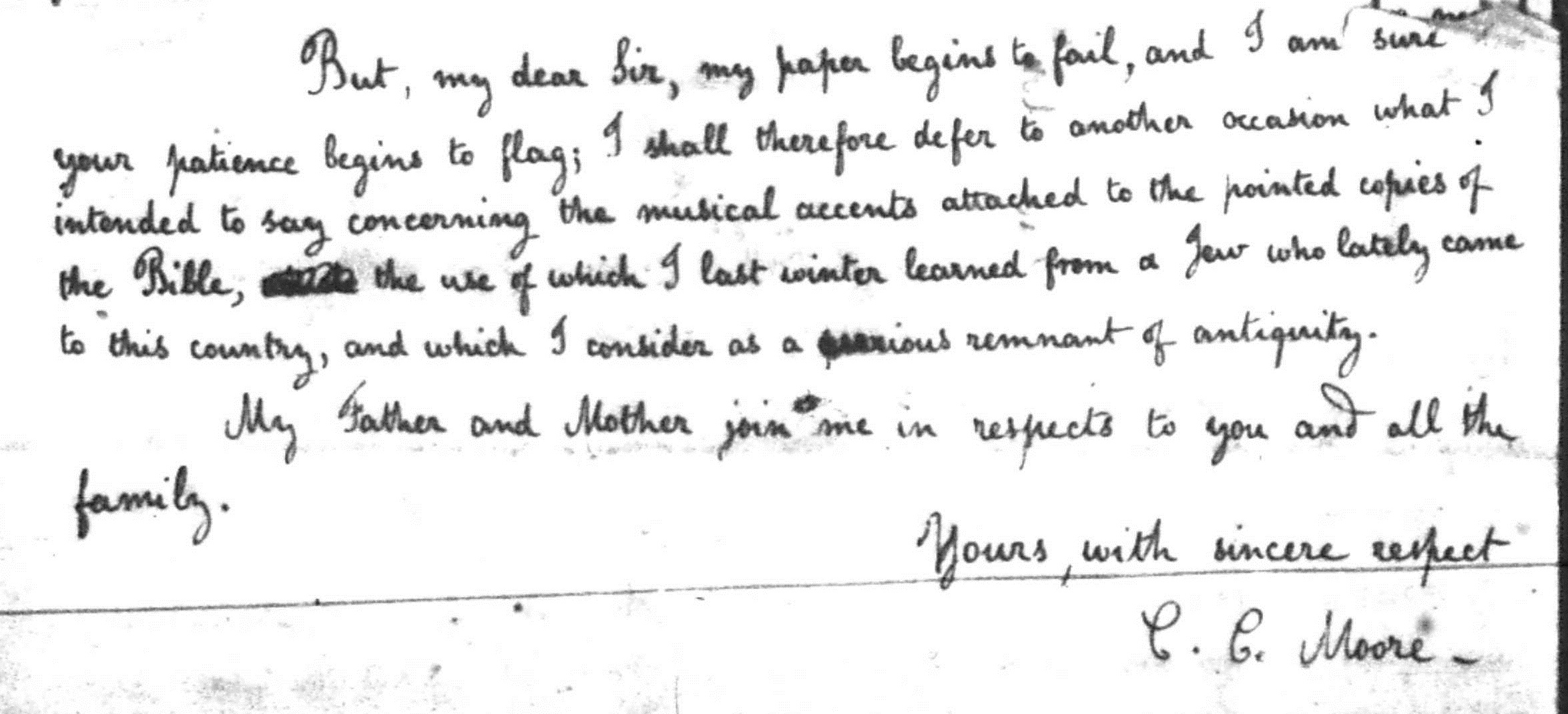
containing an academic discussion of Masoretic punctuation. (Odell Family Papers, New Brunswick Musem Archives)
The copy of “A Visit From St. Nicholas” found in the Odell Family Papers was written on paper which has an 1824 watermark, therefore must have been penned after Jonathan’s death in 1818 by a family member, likely his daughter Mary (1773-1848). The manuscript appears to be in her handwriting, as samples of her writing also from the same collection show similarities. The direct source of this particular copy of the poem is unknown, and some variants in words and punctuation that do not occur anywhere else are found in this version. The Odell copy must have been an early iteration of the poem, and may have been re-written by memory because two instances of crossed-out and corrected words appear: “up the chimney he goes” was changed to “rose” and “a little old driver so tiny” exchanged for “lively.” As well, the script appears to have been written fairly quickly, suggesting the writer was transcribing from memory. The latest scholarly work on the attribution controversy was published in 2016 by MacDonald P. Jackson, Who Wrote “ Night Before Christmas”?: Analyzing the Clement Clarke Moore vs. Henry Livingston Question, (Jefferson, North Carolina: McFarland& Company Inc., Publishers, 2016). Jackson believes that Mary Odell was certainly under the impression that family friend C.C. Moore wrote the poem, but he comes down on the side of Livingston as the true author.
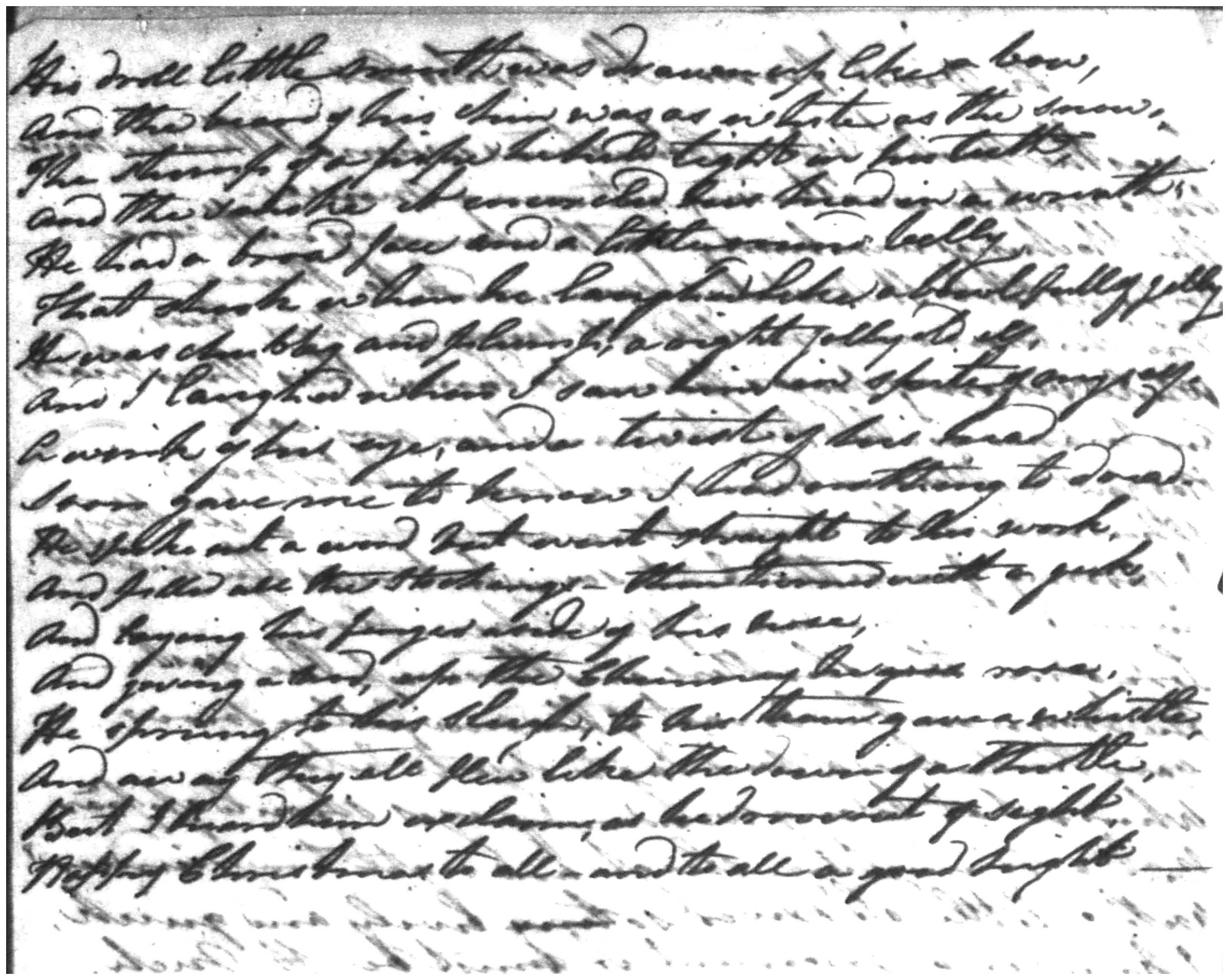
Typed transcription:
[[{"fid":"947","view_mode":"default","fields":{"format":"default"},"type":"media","link_text":"A Visit From St Nicholas Odell transcription.pdf","field_deltas":{"2":{"format":"default"}},"attributes":{"class":"file media-element file-default","data-delta":"2"}}]]
The Odell version of the poem differs slightly from common, modern versions. Unique word forms which appear include: “sugar plumbs” instead of “sugar plums” (as appeared in the first published version); “danc’d thro’” versus “danced in; “pawing and prancing” versus “prancing and pawing”; “was slung over” vs “was flung over”; “in a wreath” vs “like wreath”. As well, many punctuation differences occur, particularly at ends of lines of verse.
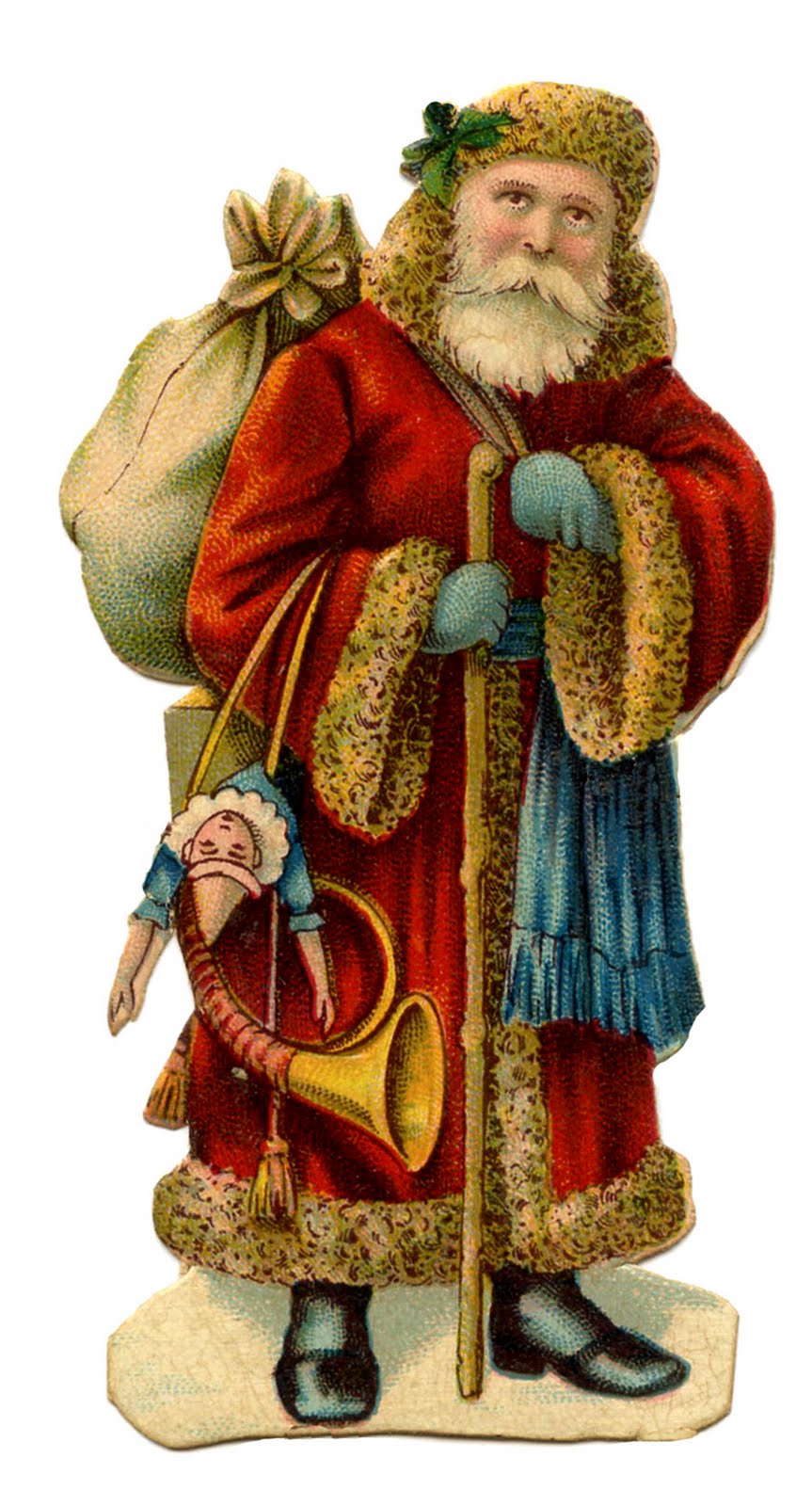
The manuscript from the Odell Papers also contributes to one of the biggest points of discussion in the authorship debate which concerns a certain pair of reindeer: “Donner and Blitzen,” or as they were recorded in the original published version, “Dunder and Blixem,” these being the common New York Dutch words and spellings for thunder and lightning versus the German words which are used in modern versions of the poem. In the Odell version, an intermediate form is used with the spellings “Donder and Blixen”. The names of some of the reindeer are also reordered.
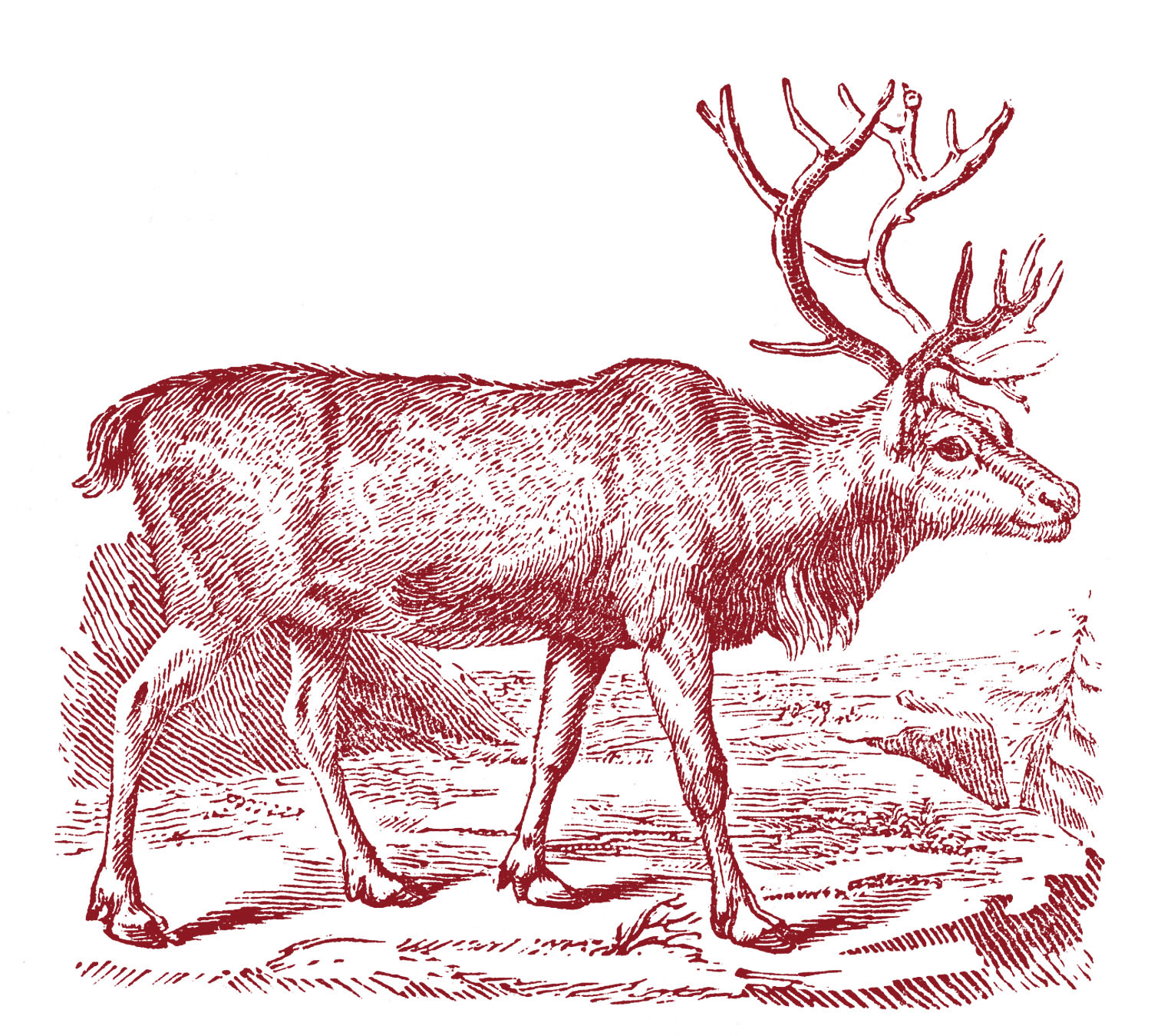
Whoever authored the poem, it has undoubtedly helped to build Christmas imagery and tradition in North America (enforcing the symbology found in the holiday writings of Washington Irving) including diminutive, flight-enabled reindeer; the use of a toy sack; entering the house through the chimney; the iconic outfit; and Santa’s cheery demeanor and his rotund appearance. The broad appeal of “A Visit from St. Nicholas” has ensured its position as a quintessential holiday poem for almost two centuries.
Note: The letter from C.C. Moore and the manuscript copy of A Visit from St. Nicholas are part of the Jonathan Odell Family Papers: 1766-1919. The original copies are held by the New Brunswick Museum Archives. The Museum has a blog post discussing the poem entitled “New Brunswick Museum’s Spirit of the Season.”
Leah Grandy holds a PhD in History and works as a Microforms Assistant at the Harriet Irving Library.

Comments Add comment
Slick little Santa
other poems as well by MOore found in the Odell files
Add new comment Comments